| Rock | Water | Wood |
| The forests of Yosemite range from foothill-woodland to alpine, the result of elevations in the Park that extend from less than 2,000 feet to the highest point, Mount Lyell, at 13,111 feet. Different zones have different mixes of trees and vegetation. In some areas the forest provides fairly dense cover and welcome shade on hot days, while in other places trees are dotted about amidst the granite. In alpine areas of the Yosemite, there are no trees at all. Among the most dramatic sights in the Park are several giant sequoia groves; the Mariposa Grove includes such trees as the 210 foot tall Grizzly Giant. (I did not manage to get to the sequoia groves on this visit). Factors big and small, from lightening, wind and other weather to insects and fungal infections, fell individual trees. Additionally, each season trail maintenance crews cut smaller trees to keep the paths clear, and the Park Service has engaged in efforts over many decades to prevent conifers from encroaching on meadows. On a larger scale, rockfalls can flatten large swaths of trees, fire can blacken many acres, and insects can lay bare thousands of trees. |
 |
| A view from above Olmstead Point
includes a Western juniper in the right foreground. These juniper
trees
are probably my
personal favorite among Yosemite's trees. The older trees are
like works of art scattered about on a vast granite canvas. They
have broad trunks and light
reddish
bark; often there are exposed
sections of wood. In some places the wood is texturized gray and
black,
elsewhere it may be eaten away by dry rot, and in other places looks as
if it had
been carved by a chisel from a fresh piece of timber. At the top
are
small craggy branches and tufts of greenery. Oftentimes there
will be lichens as well. The
trees
have
been growing for hundreds of years out there on the granite, surviving
through hot summer days and cold winter snowstorms. |
 |
| The trunk of a Western Juniper
in the Olmstead Point area. |
 |
| The trunk of a Western Juniper
frames a scene in the Olmstead Point area. |
 |
| The trunk of this Western
Juniper in the Olmstead Point area looks as if it has been carved with
a chisel. |
  |
| Below: Details of fallen trees (top two from the Lembert Dome trail; lower two from the Dewey Point trail). |
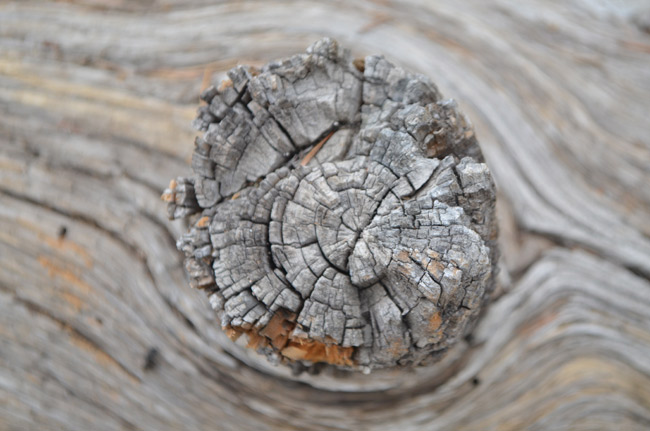 |
 |
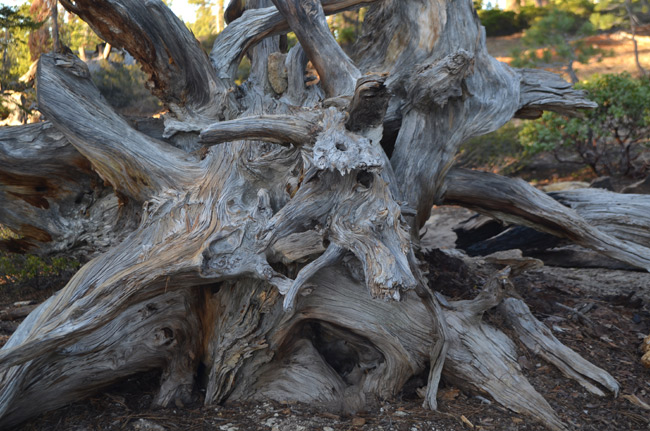 |
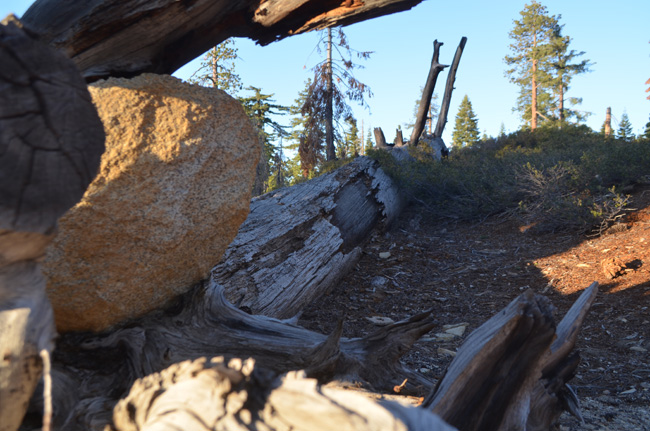 |
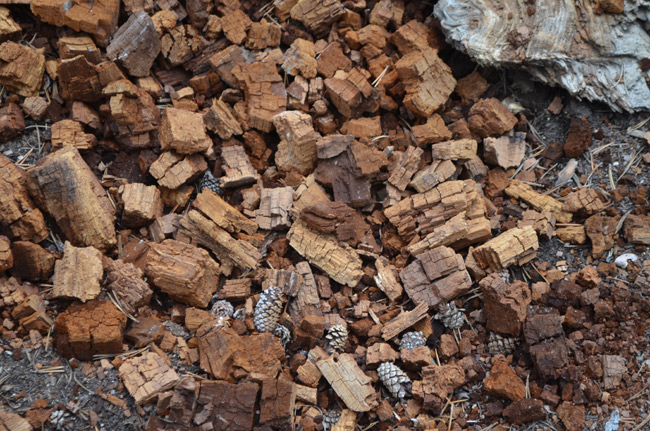 |
| Bits of wood from a fallen tree
along the Dog Lake trail. According to the National Park Service, Yosemite has 37 species of native trees. |
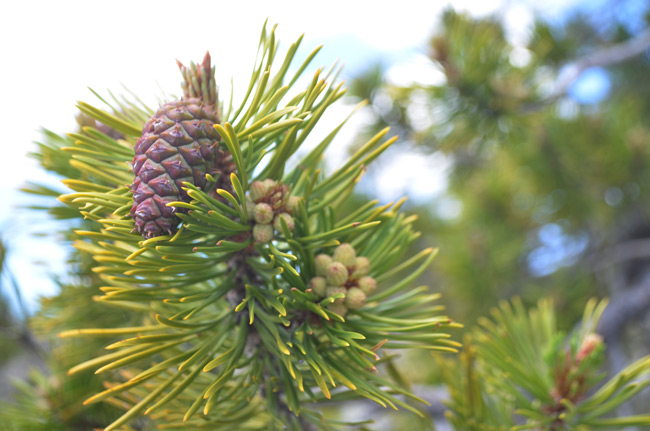 |
| One
common tree is the Sierra lodgepole pine (tamarack pine), photo taken
in the Olmstead Point area. |
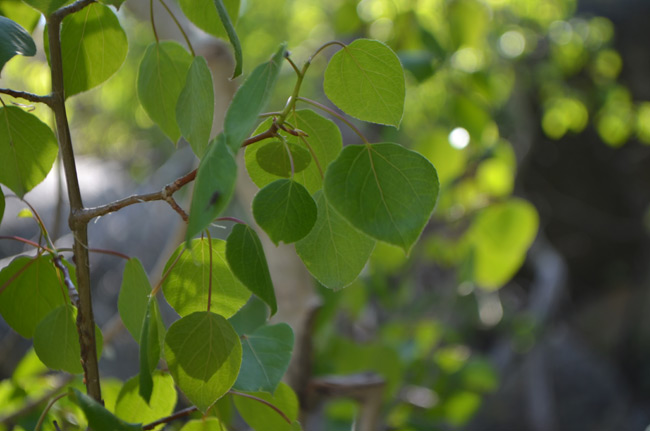 |
| Not all of Yosemite's trees are
conifers; there are also aspens, photo taken on the trail from Dewey
Point to the Glacier Point Road, as well as oaks and others. |
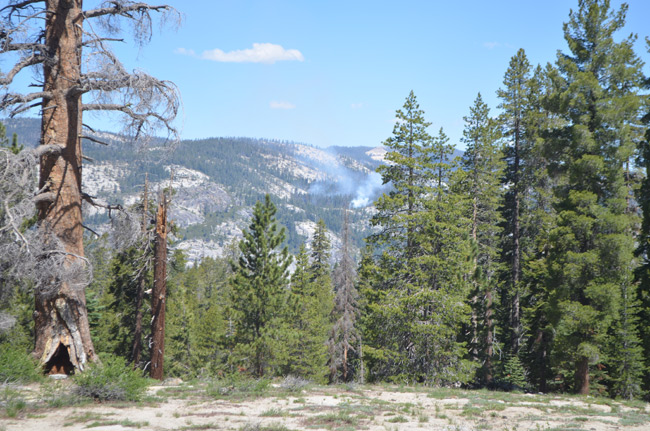 |
| Smoke rises from small fire,
seen
from near the Sentinel Dome trailhead off Glacier Point Road. |
 Notes: Famous trees of the past include the Wawona Tunnel Tree, a giant sequoia which fell in 1969, and a twisted Jeffrey Pine that grew atop Sentinel Dome and was the subject of an Ansel Adams photograph. Links: Plants - Yosemite National Park |
